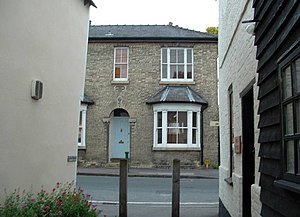Few things spark the adventurer’s spirit like the promise of gold. People are willing to leave the security of home for the dream of striking it rich on the gold fields. Time after time, gold rush fever has struck the general population, spurring massive migration to the latest gold find. Few truly find a fortune, yet this rarely stops folks from trying.
Britain has not been immune to gold fever. There are always those who are beguiled by the potential for instant wealth, and each new strike has spurred heavy migration as fortune hunters flock to the find.

America: The California Gold Rush (1848)
When James Marshall struck gold at John Sutter’s mill on January 24th, 1848, it went largely unnoticed. News of the find moved slowly and it wasn’t until late in the year that gold fever really caught on in El Dorado County. Sam Brannan was a store owner at Sutter’s Fort, and he immediately saw the potential for gain. He began advertising the strike in San Francisco and from there, the word spread like wildfire.
By June, nearly 5000 miners were working in the gold district. When news of the strike was legitimized by a statement from President James Polk, news began to spread across the country. Stories of gold, free for the taking, could hardly be contained and by 1849 immigrants were pouring into the country from the UK, China, Europe, Australia, and South America. According to the census in 1850, there were some 3,010 Britons living in California.

Australia: The Victoria & NSW Gold Rush (1851)
Bathurst in New South Wales was little more than a backwater penal settlement when Edward Hargraves discovered gold there in 1851. Within weeks, however, thousands of settlers had flocked to Australia and were digging frantically for a fortune. The governor of Victoria saw potential in the new settlers and offered a reward for anyone who struck gold within 200 miles of Melbourne. Diggers took up the challenge and soon found gold in even greater abundance.
By the end of 1851, the Australian gold rush was at full steam. Tens of thousands of settlers arrived, tripling Victoria’s population to 237,000 in 1861, and doubling it again to 540,000 by 1861. New South Wales also saw a significant population increase, reaching 357,000 by 1861. Of these immigrants, 290,000 came from the British Isles and quickly became the dominant nationality in the region. In fact, by 1861, 60% of the population was from the UK.
South Africa: The Kimberly Gold Rush (1886)
The initial riches of South Africa were found in diamonds; however, in 1886, George Harrison discovered an enormous amount of gold-bearing conglomerate along the reefs of the Witwatersrand Basin. Unlike previous strikes, there were no nuggets to be found. Instead, there were miles of low-grade ore covered in thousands of feet of hard rock.
News of the strike spread quickly and men came flocking, but only those with capital could get in on the action. A number of men who had made a fortune off of Kimberly diamonds quickly grabbed control of the gold fields. Claims were soon staked along the fringe of Johannesburg, and new techniques were being developed for extracting gold from the ore.
Not many were able to capitalize on this gold rush; however, Cornish hard rock miners had just the skills that were needed to extract diamonds and gold from the mines. Over 2500 Cornishmen migrated to South Africa and soon made up a large percentage of the white workforce in the South African mines.
